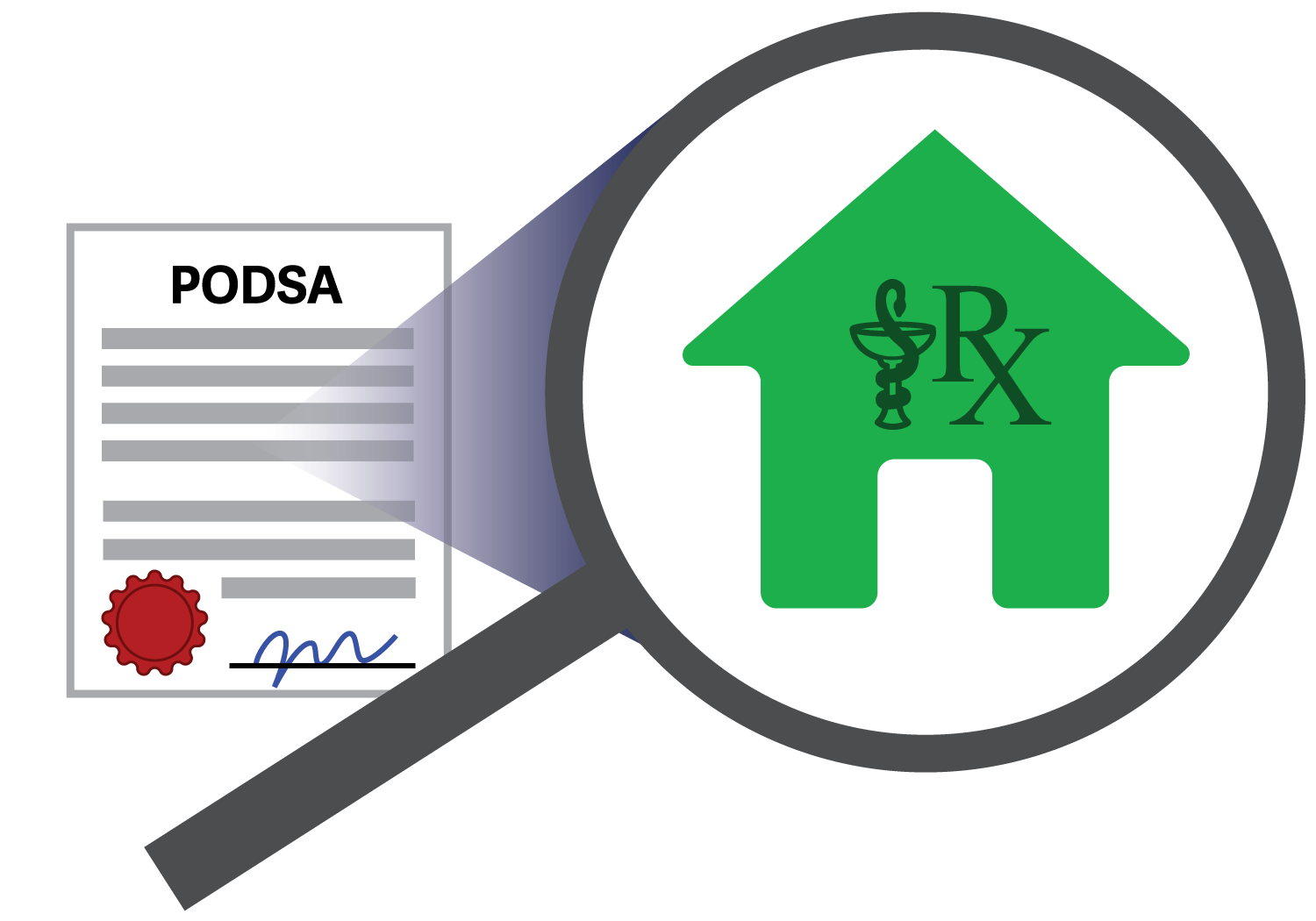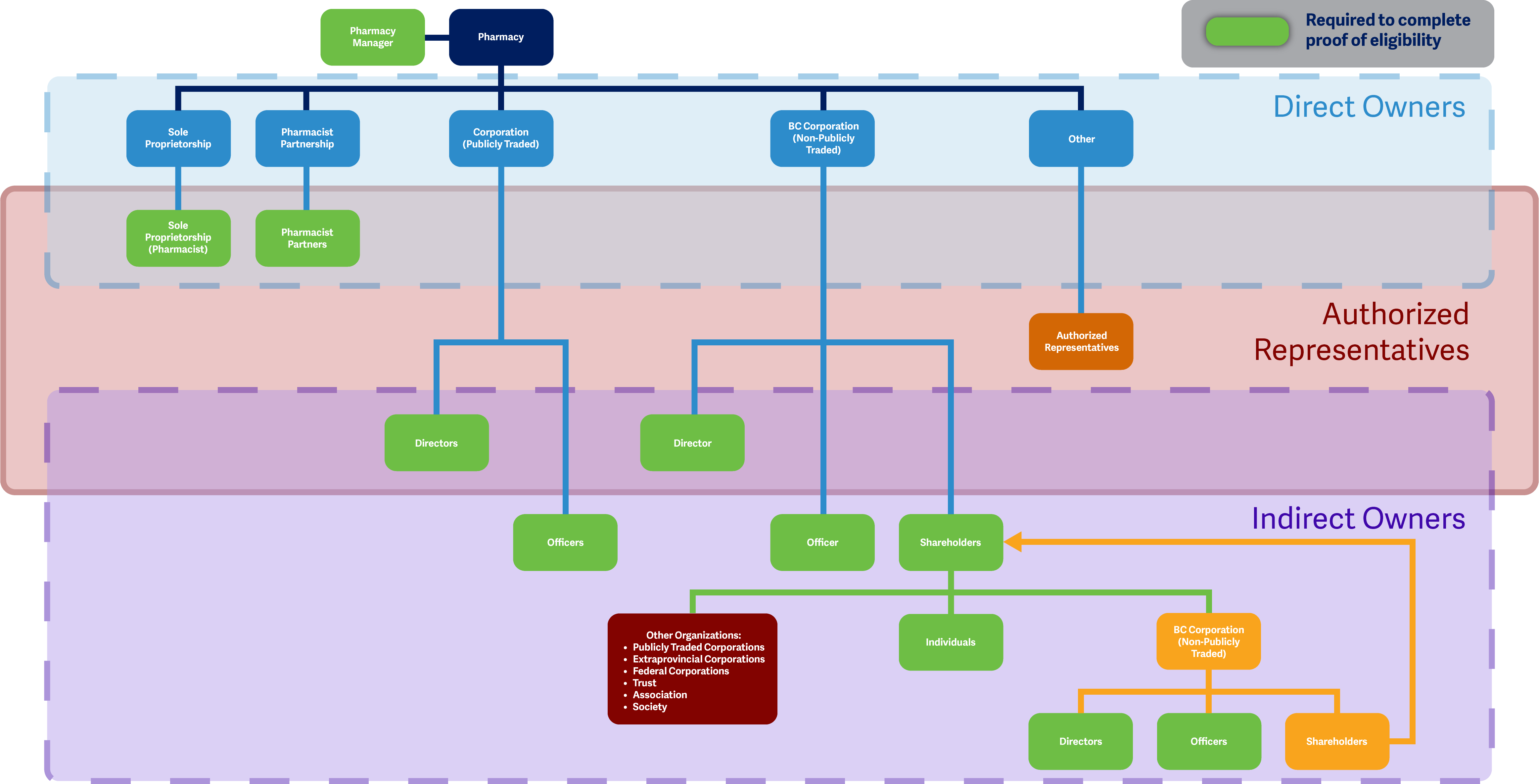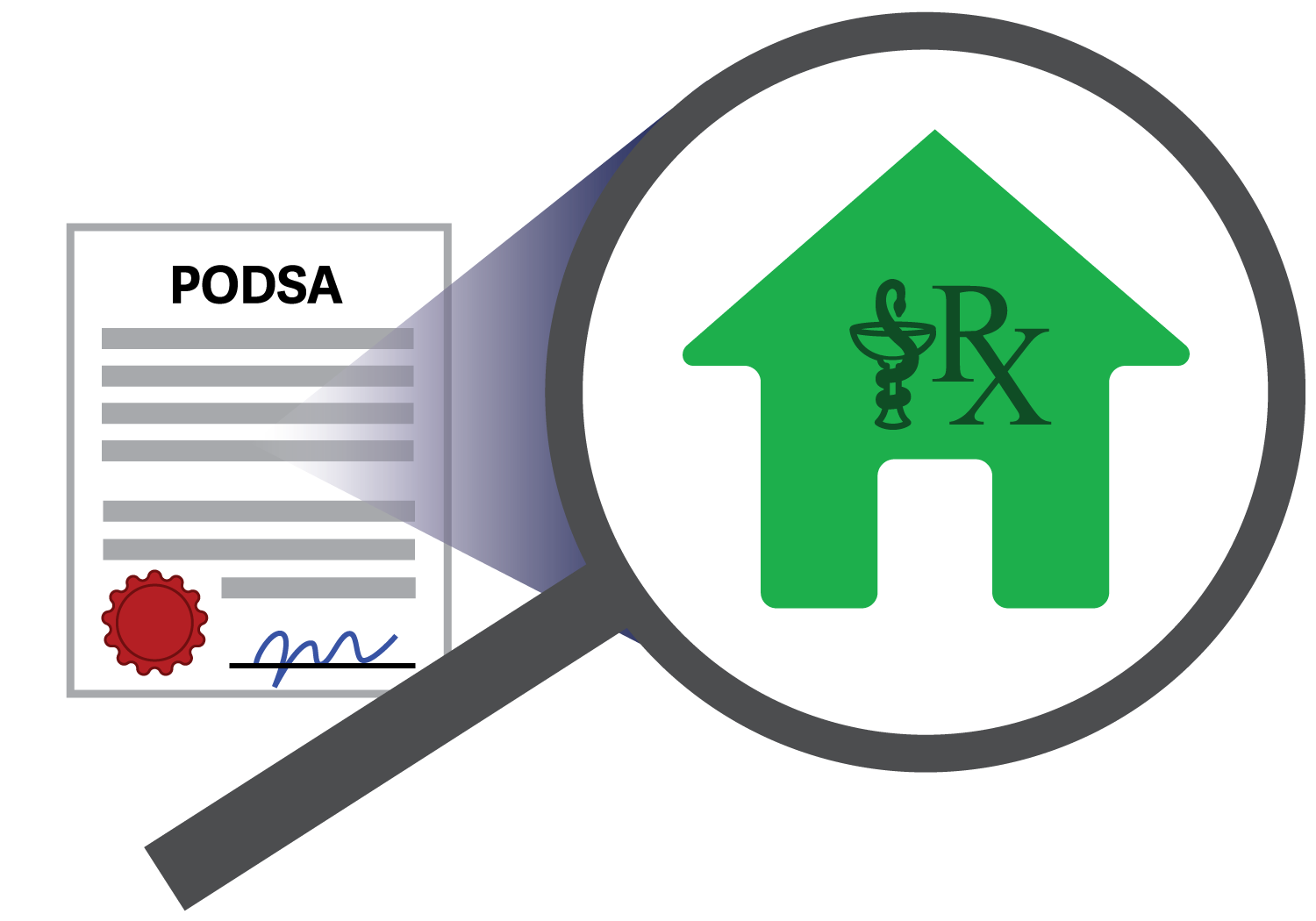
New PODSA Ownership Requirements: Ownership Structure and Requirements for Licensure
In June 2017, the College Board approved amendments to the bylaws, forms and schedules under the Pharmacy Operations and Drug Scheduling Act (PODSA) to support the new pharmacy ownership requirements for a public posting period of 90 days which ended on September 20, 2017. The College Board will consider approving these bylaws for a 60-day filing period at their November 2017 Board meeting. Subject to that decision, the new requirements are anticipated to be in-force by March 1, 2018.
Existing pharmacies must meet the requirements of a new pharmacy license application when they renew their licence during the transition period. The first group of existing pharmacies that will need to meet the new requirements will be those pharmacies whose pharmacy licence expires at the end of May 2018 even though the PODSA amendments will be approved earlier. The transition period ends after all pharmacies have gone through the transition period.
Common Types of Business and Ownership Structure:
Sole Proprietorship
In a sole proprietorship, one person owns and operates the business and is personally responsible for its liability. Within the context of PODSA, this person must be a registered pharmacist and is considered the "direct owner" of the pharmacy.
Partnership
In a partnership, the business is owned by two or more partners. There are several types of partnerships, including the following:
General Partnership – This is when the partners manage the business and assume responsibility for the partnership’s debts and other obligations.
Limited partnership - This is when the business has both general and limited partners. The general partners own and operate the business and assume liability for the partnership, while the limited partners serve only as investors with no control over the business and who are not subject to the same liability as the general partners. Like sole proprietors, general partners are personally liable for the partnership’s obligations.
In the context of PODSA, all partners, regardless of type, must be pharmacists and each partner is the “direct owner” of the pharmacy.
Corporation
A corporation is an independent legal entity, separate from its owners. In the context of PODSA, the corporation that holds the pharmacy licence is the “direct owner” of the pharmacy. Corporations that are direct owners must be incorporated in BC.
|
If your pharmacy is owned by a corporation, the direct owner is the corporation for which you submitted the “Notice of Articles” and “Certificate of Incorporation” when you first applied for a new pharmacy licence or change of ownership with the College. |
Typically, a corporation’s structure consists of 3 main groups: directors, officers and shareholders. In the context of PODSA, these groups are referred to as “Indirect Owners.”
Directors: Directors oversee the affairs of the corporation and protect the interests of the shareholders. In the context of PODSA, Director refers to a member of a Board of Directors of a corporation. A member of the organization with job title containing the word “Director,” (e.g. Director of Operations) may not be a Director under PODSA.
The new PODSA requirements state that the majority of a corporation’s Directors (i.e. over 50%) must be pharmacists registered with the College.
Officers: Officers are appointed by Directors to oversee the day-to-day operations of the business. Officer positions include: CEO, COO, CFO, Treasurer, Secretary, etc.
|
Directors are identified in the “Notice of Articles” issued by BC Registry Services. In addition, directors and officers are identified in the “BC Company Summary” issued by BC Registry Services. If there are changes to the directors of your corporation, the new directors would be listed in the “Notice of Change of Directors.” |
Shareholders: Shareholders have an ownership interest in the corporation by virtue of a monetary investment.
The shareholders are identified in the Central Securities Register of your corporation. Every corporation is required by the BC Business Corporations Act to maintain a complete and current shareholder register with the following information:
- All shares issued by a company
- Name and last known address of each shareholder and;
- Number, class and any series of any shares owned by that shareholder
|
Indirect Owners can be individuals or corporations. A corporation is an indirect owner if it is a shareholder of the direct owner or another indirect owner – they are often called a “parent company” or “holding company”. |
Ownership Types and Authorized Representatives Diagram

Learn more about authorized representatives in this ReadLinks article.
Requirements for Licensure
Proof of Eligibility
Each indirect owner of a corporation will be required to provide Proof of Eligibility when applying for, renewing or reinstating a pharmacy licence.
Proof of Eligibility consists of:
- Attestation and
- Criminal Record History
The elements of Proof of Eligibility will be discussed in greater detail in a later article.
Additional Documentation of Ownership
Corporations
Direct Owners of corporations must provide:
- A copy of the current BC Company Summary;
- A certified copy of the Central Securities Register (Shareholder Register) if the corporation is not publicly traded; and
- The following information for all Indirect Owners:
- Legal Name
- College of Pharmacists of BC Registration Number/eServices ID (If applicable)
- Email Address
|
For shareholders that are corporations, only those that are BC incorporated, non-publicly traded corporations will have to provide the same corporate documents listed above, information about their directors, officers and shareholders, as well as their proof of eligibility. |
Sole Proprietorships and Partnerships
If the Direct Owner of a pharmacy is a pharmacist-sole proprietorship, or a partnership of pharmacists, they will have to provide the following:
- “Statement or Registration Sole Proprietorship” or “Statement of Registration General Partnership” as submitted to BC Registries
- Valid business licence
Publicly Traded Corporations
Direct Owners – If the Direct Owner is a publicly traded corporation, a Director of the corporation will have to provide the names, College of Pharmacists of BC registration number/eServices ID (if applicable), and email address for all Directors and Officers of the corporation. Shareholders’ information is not required.
Indirect Owners –Indirect Owners that are also publicly traded corporations are not required to provide any corporation information or email contacts.
Making the Transition
The following diagram outlines the pharmacy licence renewal process during the transition.

If your pharmacy is owned by a sole proprietorship or partnership of pharmacists, the pharmacist-sole proprietor or each pharmacist-partner will receive the renewal notice and have to complete all the renewal requirements in the same timeframe as a Director of a corporation.
RELATED FAQ'S
How can I determine the “direct owner” of my pharmacy?
Who are the directors and officers of my corporation?
Who are the shareholders of my corporation?
Can a corporation be an indirect owner? What would that mean for my pharmacy?
How can I tell whether my corporation (direct and indirect) is publicly traded or not?
New Pharmacy Ownership Requirements ReadLinks Series
Watch for New Pharmacy Ownership Requirements articles each month on ReadLinks. These articles feature important elements of the new requirements for pharmacy licensure and renewals to help pharmacies prepare to meet the new requirements
- New Pharmacy Ownership Requirements

 Share
Share


